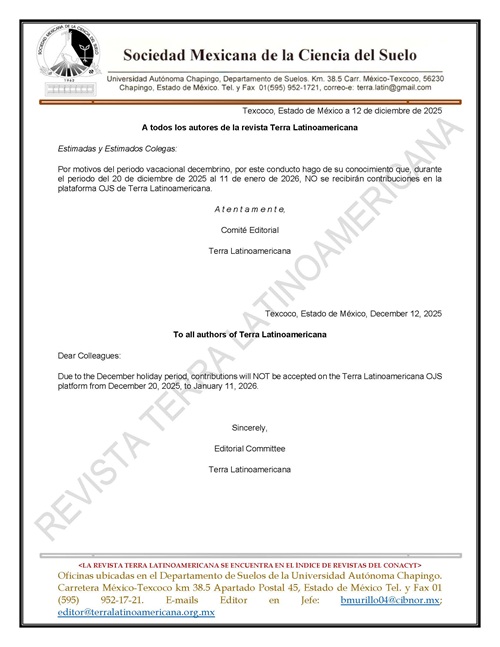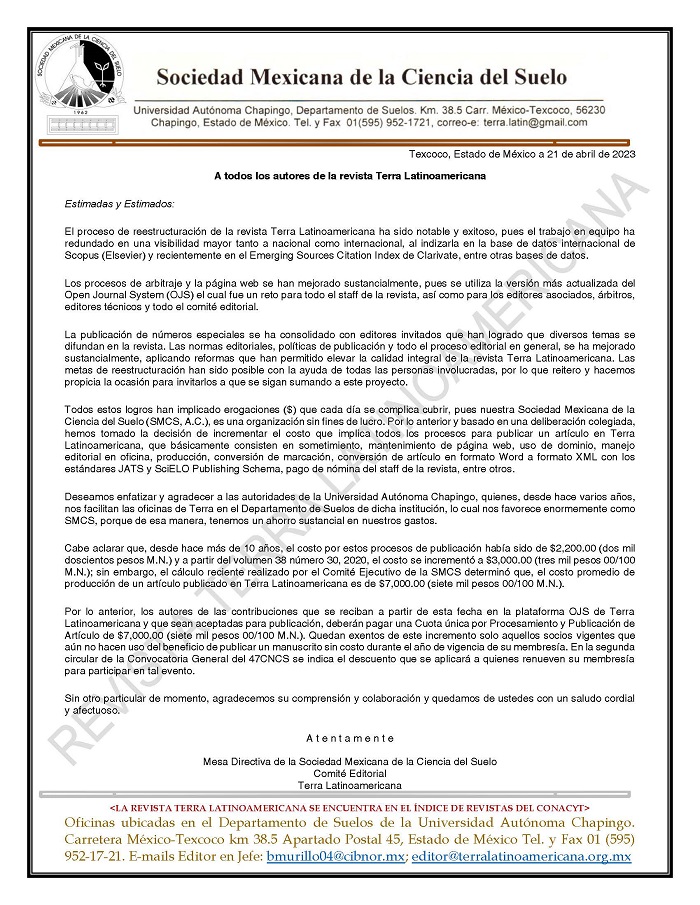Aerobic Compost with Residual Sludge and Garden Prunings
DOI:
https://doi.org/10.28940/terra.v42i.2029Keywords:
organic carbon, ash, total nitrogen, salinity, temperatureAbstract
The need to use residual sludge from wastewater treatment and residues from gardens pruning to produce composts are strategic to soil improvement and water saving. The objective was to evaluate the ef fect of residual sludge and plant material ratios on content of ash, organic C, total N, C:N ratio, pH and electrical conductivity during aerobic composting. The sludge and wood chips proportions were 1:1, 1:2 and 1:3 m3, in piles of 5 × 1.5 × 0.5 m, irrigation management and aeration were per week. A completely randomized experiment design with factorial arrangement and five replications was conducted. Temperature, water content and oxygen were monitored over a period of 20 weeks. The highest pH was 6.89 in treatment with new sludge 1:1, and the lowest pH was 6.36 in piled sludge for same relation 1:1, these was inversely to salinity levels detected of 12.3 and 13.7 mS cm-1. The highest organic C was in sludge stacked with more than 12 months in the 1:2 and 1:3 ratios, while the lowest values were in the new sludge. A significant dif ference (P < 0.05) was found for the ef fect of type of sludge on the percentage of ash, organic matter, organic C and C/N ratio, but no significant ef fect for total N. The proportions residual sludge and
wood chips were only significant for C/N ratios. The content of Organic C decreased in 73%, 66%, and 51% for the new, medium and stacked sludge, as a product of the decomposition process. The use of compost, according to the NMX-AA-180-SCFI-2018 standards indicates that, compost can be used as a good soil amendment.
Downloads
Publication Facts
Reviewer profiles N/A
Author statements
- Academic society
- Terra Latinoamericana
- Publisher
- Mexican Society of Soil Science, C.A.

















